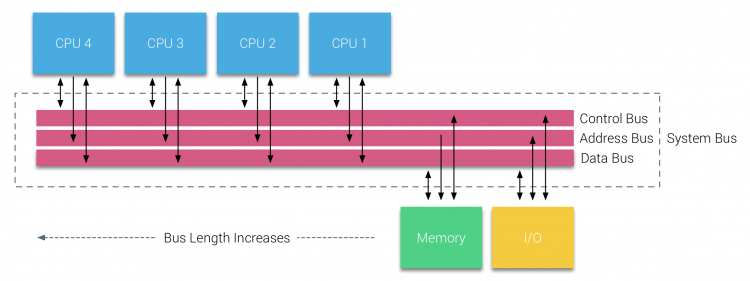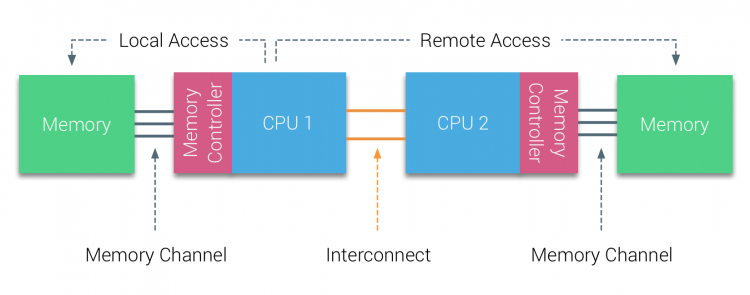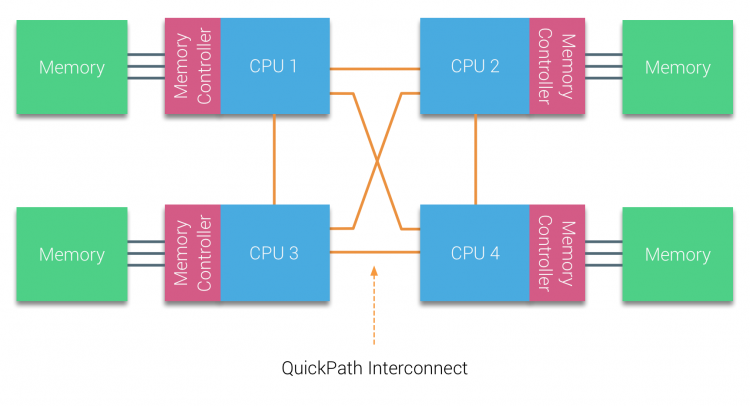UMA vs NUMA
UMA (Unified Memory Access)
- Uniform memory access (UMA) is a shared memory architecture used in parallel computers.
- All processors in the UMA model shard the physical memory uniformly
- Access time to a memory location is independent of which processor makes the request or which memory chip contains the transferred data.
- Uniform memory access computer architectures are often contrasted with non-uniform memory access (NUMA) architectures.
- In the UMA architecture, each processor may use a private cache. Peripherals are also shared in some fashion.
- The UMA model is suitable for general purpose and time sharing applications by multiple users.
- It can be used to speed up the execution of a single large program in time-critical applications.1

UMA Types
- UMA using bus-based symmetric multiprocessing (SMP) architectures
- Processors may be interconnected using buses, crossbar switches or on-chip mesh networks.
- The bottleneck in the scalability of SMP using buses or crossbar switches is the bandwidth and power consumption of the interconnect among the various processors, the memory, and the disk arrays.
- Mesh architectures avoid these bottlenecks, and provide nearly linear scalability to much higher processor counts at the sacrifice of programmability

- UMA using crossbar switches

- UMA using multistage interconnection networks.
- Omega / Clos / Benes - networks
Non-Uniform Memory Access (NUMA)
- Non-uniform memory access (NUMA) is a computer memory design used in multiprocessing,
- The memory access time depends on the memory location relative to the processor.
- Under NUMA, a processor can access its own local memory faster than non-local memory (memory local to another processor or memory shared between processors).
- The benefits of NUMA are limited to particular workloads,
- notably on servers where the data is often associated strongly with certain tasks or users.1


Reference
Notes Mentioning This Note
MPI Collective Operations by Pjesivac-Grbovic
Towards Automatic and Adaptive Optimizations of MPI Collective Operations